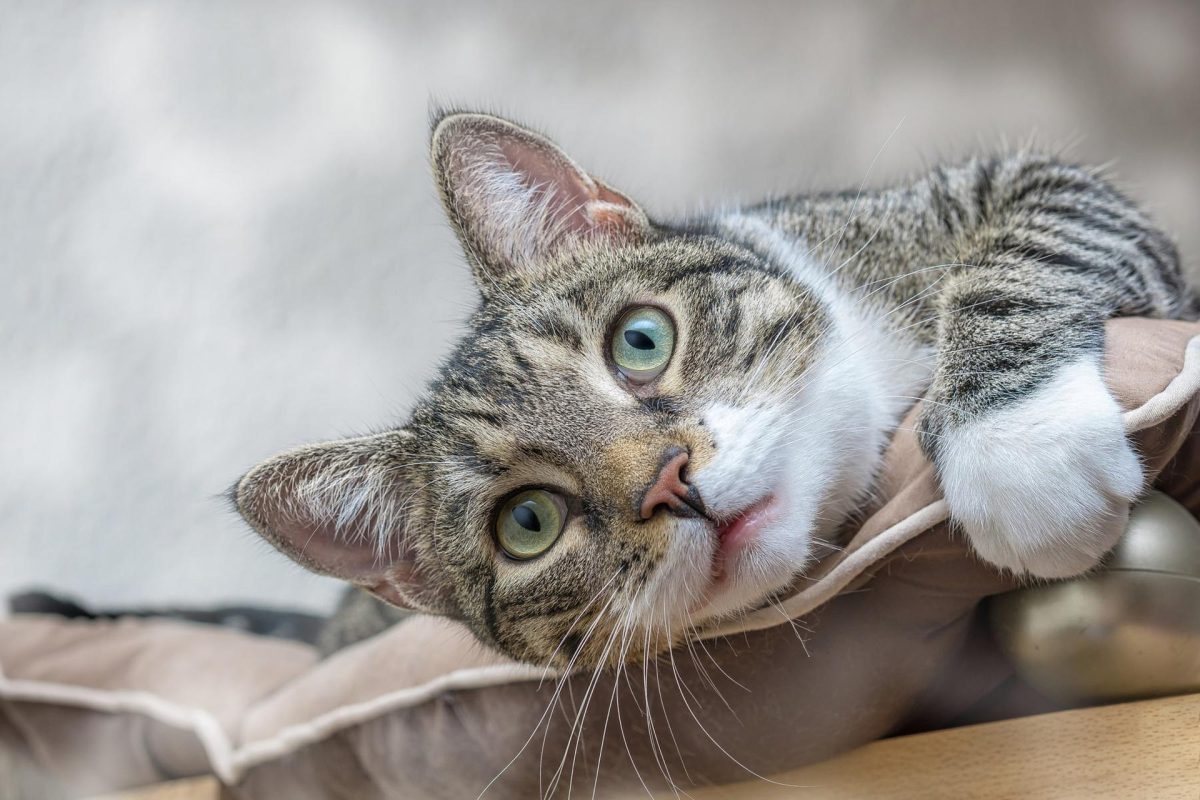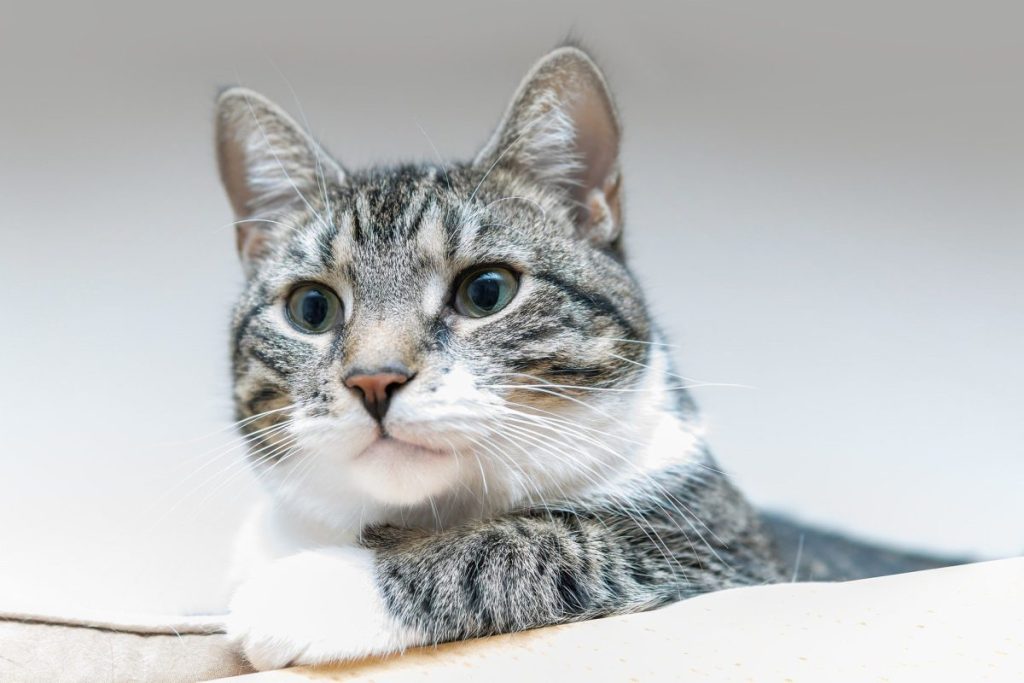
Who Is the European Shorthair? Fascinating Facts About These Amazing Cats
Jan 5 2024.
Perhaps you’d like to bring a new furry companion into your life this year but aren’t sure which type of cat is best for you. Maybe an active Bengal kitty might be right. Or perhaps a laid-back Ragdoll. But, have you given any thought to the European Shorthair? These low-maintenance felines certainly have a lot of wonderful pawsitives to offer. Below, Cat in a Flat dives into their fascinating history, as well as what you should know before you get one.
Table of contents
What is the European Shorthair cat?
You’d think from the name that European Shorthair cats must surely originate from Europe, right? Well…sort of. While it’s not possible to pinpoint exactly when our feline friends first domesticated themselves, the oldest known domesticated kitty originated some 10,000 years ago in Egypt.
However, the European Shorthair did first emerge in Italy, more specifically Rome. These types of felines were treasured in ancient Rome because of their sturdy constitutions and amazing hunting abilities. European Shorthairs served as working cats and kept vermin out of human food sources and away from human homes.
As Roman invaders travelled around Europe, it’s believed these spunky fur friends travelled with them. Eventually, they made their way around the globe!

What do European Shorthairs look like?
What exactly do European Shorthairs look like? One surprising fact about these cats is that the breed developed naturally, free of human intervention. Over time, certain traits became more prominent in this cat breed—such as their larger size, rounded faces, and muscular bodies. However, European Shorthairs continue to share many similar characteristics to the average domesticated feline.
- European Shorthairs are medium sized to large cats. Their height can fall anywhere between 9 – 11 inches, length 31 – 39 inches, and weight between 9 – 13 lbs. (for females) and 11 – 15 lbs. (for males).
- A European Shorthair’s fur is short and dense. While this does translate to less grooming than a long-haired cat might need, they still require regular care to keep their coat healthy and shiny!
- These kitties have broad, muscular chests, strong legs and round paws. These are a few of the characteristics that make them excellent hunters!
- When it comes to color, almost anything goes for this breed. European Shorthairs can have reddish, white, black, tabby, or even spotted fur. The only colors you won’t see in a European Shorthair? Chocolate or point (like Siamese cats).
- European Shorthairs differ most from the average domesticated cat in the shape of their head and ears. This kitty breed has a rounder, larger face and head, as well as rounded ears. Their eyes are also set further apart than other cat types.
European Shorthair personality and characteristics
A European Shorthair’s personality traits can be just as diverse as their appearance! However, these kitties are generally very loyal, intelligent, and affectionate. Take note that this breed isn’t usually ideal for apartment living. They enjoy exploring and being outdoors. Their lively nature also means that they will usually adapt quickly to new environments (such as moving house) or new situations (such as a new pet).
These furry friends are also avid hunters, so you’ll need to take steps to prevent Mr Whiskers from hunting local wildlife. They also require lots of play sessions. If you’re thinking of getting a European Shorthair, you’ll need to prioritize daily playtime, so your feline stays happy and engaged. On the bright side, you won’t have any pest problems with this type of kitty in your home! Just be prepared for the occasional ‘gift’ from your feline.

How to know if I should get a European Shorthair
Your lifestyle and personality play an important part in the types of kitties you should bring into your life. NEVER adopt or buy a cat on whim; always do your research to make sure that you can accommodate a new kitty and that they’re a good fit for you.
What to know:
- This cat breed is very robust and has a long life expectancy—in some case up to 20 years!
- European Shorthairs aren’t susceptible to any particular diseases. However, you should ensure your cat stays healthy by booking annual vet check-ups. Like any feline, a European Shorthair can experience kidney, dental, weight gain (which can lead to feline diabetes), and other issues if they’re not properly taken care of.
- While it is possible to keep a European Shorthair as a purely indoor cat, these furry friends thrive best when they have access to a safe outdoor space where they can run and climb! Hence, if you’re thinking of getting a European Shorthair you may want to consider cat-proofing your garden or yard as well as training your feline to use a cat flap.
What you need:
- Basic equipment. As with any furry friend, make sure your kitty has access to multiple litter boxes (and that you clean the litter daily). They will also need lots of scratching posts and vertical climbing space, as well as food and water bowls.
- Twice daily feeding. Feed your cat twice a day, once in the morning and once in the evening. Make sure they have multiple clean water sources as felines drink a lot of water.
- A lot of attention. Do not leave your European Shorthair alone for long periods of time. These kitties are very active and will become bored without enough attention. Provide your fur friend with plenty of interactive toys and climbing and scratching trees. Make sure to play with Mr Whiskers daily. If your European Shorthair is an indoor cat or you’re away for several hours every day, hire a sitter for at-home cat day care. A cat sitter can pop in to play with and keep your fur friend company during the day. If you’re going away on a trip, consider hiring a pet sitter for twice daily visits or overnight stays so your European Shorthair gets enough attention and stimulation in your absence.
- Clicker training. This is one cat breed that will be very happy with clicker training. In fact, a European Shorthair will thrive learning tricks!
Still not sure if the European Shorthair is right for you? Check out our blog posts on the most popular cat breeds, best kitties for apartment living, and hypoallergenic cat breeds that cause the least allergies.
- #cat behaviour
- #catinaflat
- cat facts
- european shorthair
- European shorthair cat
